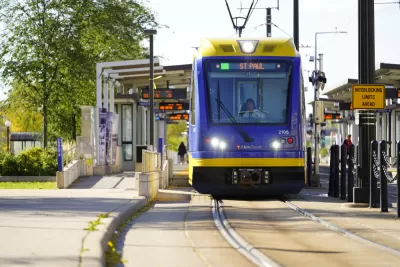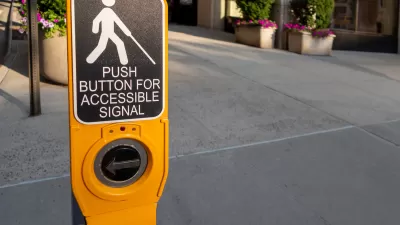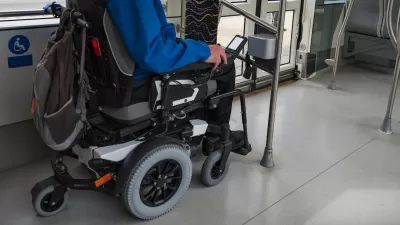Just 8 percent of U.S. households live near “high-quality transit.” How can federal infrastructure spending help fill this gap?

The Urban Institute’s Yonah Freemark assesses the potential of transit funding allocated in the Infrastructure Investment and Jobs Act (IIJA), which could help agencies bring public transit to more than the 8 percent of U.S. households that currently live near “high-quality transit.”
Freemark’s research on transit accessibility found that this percentage grew from a low of 5 percent in the 1990s, but that U.S. accessibility is far below that of other countries such as Canada, England, or France. “That’s one reason the average resident of France and the United Kingdom takes almost four times as many (PDF) transit trips annually as the average US resident,” Freemark explains.
Freemark describes planned transit projects in Minneapolis and Seattle, the cities with the most robust plans for their IIJA dollars. “When selecting projects for funding from IIJA, US Department of Transportation officials could consider how much investments may increase transit access to a higher share of the population, especially if those projects can improve accessibility to employment and other needs for people of color and residents with low incomes.” Freemark also advises linking transit plans with land use policy reform that encourages transit-oriented development (TOD) and investing in areas with high population density and poor transit access.
FULL STORY: Federal Infrastructure Funds Could Fill Gaps in Local Transit Accessibility

Maui's Vacation Rental Debate Turns Ugly
Verbal attacks, misinformation campaigns and fistfights plague a high-stakes debate to convert thousands of vacation rentals into long-term housing.

Planetizen Federal Action Tracker
A weekly monitor of how Trump’s orders and actions are impacting planners and planning in America.

Chicago’s Ghost Rails
Just beneath the surface of the modern city lie the remnants of its expansive early 20th-century streetcar system.

Bend, Oregon Zoning Reforms Prioritize Small-Scale Housing
The city altered its zoning code to allow multi-family housing and eliminated parking mandates citywide.

Amtrak Cutting Jobs, Funding to High-Speed Rail
The agency plans to cut 10 percent of its workforce and has confirmed it will not fund new high-speed rail projects.

LA Denies Basic Services to Unhoused Residents
The city has repeatedly failed to respond to requests for trash pickup at encampment sites, and eliminated a program that provided mobile showers and toilets.
Urban Design for Planners 1: Software Tools
This six-course series explores essential urban design concepts using open source software and equips planners with the tools they need to participate fully in the urban design process.
Planning for Universal Design
Learn the tools for implementing Universal Design in planning regulations.
planning NEXT
Appalachian Highlands Housing Partners
Mpact (founded as Rail~Volution)
City of Camden Redevelopment Agency
City of Astoria
City of Portland
City of Laramie





























